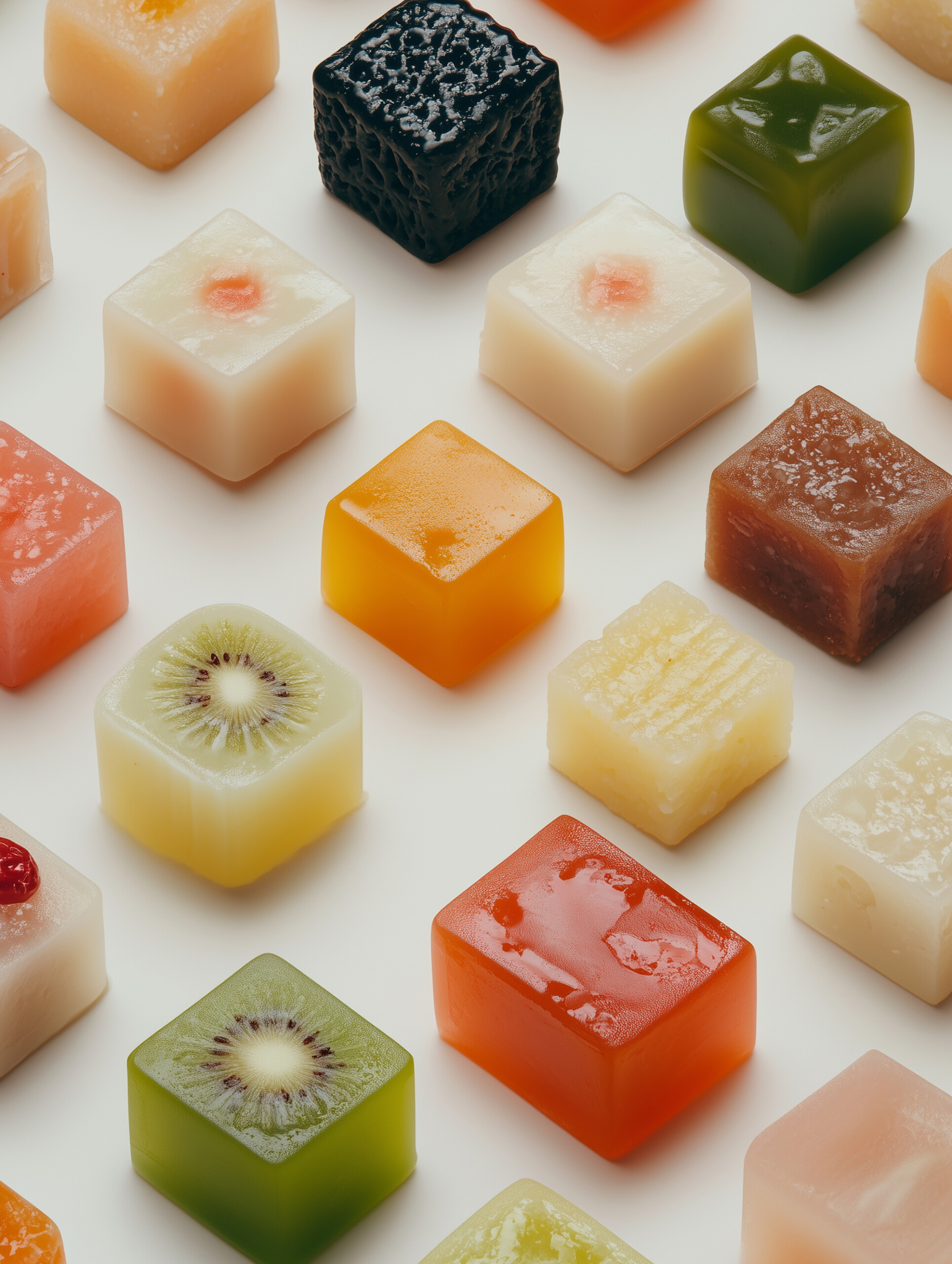10 Revenue-Generating Automations for Businesses That Want Results
The Problem: Your Marketing Team is Busy, But Your Revenue Isn’t Growing
You have a good team, they work hard. They’re creating content, managing social media, sending regular emails… but at the end of the month, are you seeing the revenue growth you expected?
For many businesses, the answer is no. And it’s not because your products aren’t good or your people aren’t capable.
It’s because they’re trapped in a cycle of being busy and not productive, – focusing on completing marketing tasks without strategy, direction or the expertise to create either.
According to Klaviyo’s benchmarks, automated email flows (or ecommerce email automations) generate up to 30x more revenue per recipient than one-off campaigns like newsletters.
Who doesn’t want to 30x their revenue?
Your abandoned cart email could be generating 30 times more revenue per person than the newsletter your team spent hours perfecting.
Why such a massive difference? Because automated flows are triggered by actual customer behaviors. Someone abandons a cart, browses a specific product, or makes a purchase – and your system automatically sends them the perfect message at exactly the right moment.
Even better? Once set up properly, these automations work 24/7, requiring only occasional fine-tuning. Your marketing transforms from a constant demand on resources to a systematic revenue engine that runs while you focus on growing your business.
The Solution: Turn Your Email Into a Predictable Revenue Machine
Here’s what gets me really excited about ecommerce email automation – it’s not just about recovering lost sales. It’s about transforming how your entire marketing function operates:
- Your team gets time back – Most clients cut their email workload by 40-60% while seeing better results
- You get clear numbers – Every automation has specific revenue targets and performance metrics you can actually track
- Your customers get what they need – Buyers receive information relevant to their specific purchase stage, not generic blasts
- Your message stays consistent – Core value propositions are communicated systematically, not reinvented each time
- You see exactly what’s working – Unlike many marketing activities, automation provides clear, attributable revenue metrics
The best part? Once these systems are in place, they scale with your business without requiring proportionally more resources. That’s the definition of operational efficiency.
The Plum Framework: 10 Revenue-Generating Ecommerce Email Automations for Businesses That Want Results
After implementing and optimizing ecommerce email automation for dozens of businesses across different industries, We’ve developed a framework for high-impact flows that consistently deliver measurable results. These aren’t just marketing activities. They’re strategic systems that directly contribute to your bottom line and save your team time.
1. The Strategic Welcome Series
For businesses selling considered purchases or specialized products, the welcome series is particularly crucial because your customers often need more education before making a decision. Yet most welcome emails I see are wasted opportunities – a simple “thanks for subscribing” with minimal substance.
A strategic welcome series shouldn’t just say hello. It should systematically move new subscribers toward their first purchase by addressing key decision factors.
Strategic Timing: Send the first email immediately, then space subsequent emails 2-3 days apart for considered purchases to allow for proper evaluation.
Optimization Tactic: Segment new subscribers based on which product category they showed interest in, and customize the welcome content accordingly.
2. Abandoned Cart Recovery With Purpose
For businesses selling considered purchases, abandoned carts represent a unique opportunity. Unlike impulse buys, your potential customers are often comparing specifications, reviewing compatibility, or calculating value. A strategic abandoned cart sequence needs to address these specific barriers to purchase.
Most companies send a simple reminder email, maybe with a discount. Forward-thinking businesses implement multi-email sequences that address specific purchase hesitations and provide the information buyers need to make confident decisions.
Strategic Timing: For complex products, send the first email within 8-12 hours to allow for research time. For simpler products, 4-6 hours is more appropriate.
Optimization Tactic: Use conditional splits to create different paths for first-time vs. repeat buyers, with more detailed product information for new customers.
3. Browse Abandonment: Turning Window Shoppers Into Buyers
While cart abandonment targets shoppers who showed high purchase intent, browse abandonment catches those who viewed specific products but didn’t add them to their cart. This flow captures more people higher in the funnel, making it a valuable complement to your cart recovery strategy.
Strategic Timing: First email 24 hours after browsing, subsequent emails 2-3 days apart.
Optimization Tactic: For higher-priced items, include user-generated content showing the product in action to increase confidence.
4. Post-Purchase Customer Success Sequence
The period after purchase is critical for ensuring customer success with your products, particularly for businesses selling items that require some level of customer education. A well-structured post-purchase flow reduces support inquiries, prevents returns, and establishes the foundation for repeat orders.
Most companies send only basic order confirmations and shipping notifications. Market leaders use this touchpoint to deliver value, ensure proper product usage, and begin building the case for future purchases.
Strategic Timing: For complex products, time guidance emails to arrive before customers attempt setup or use. For simpler products, compress the sequence to match typical usage patterns.
Optimization Tactic: Use purchase data to segment customers by product category and customize the post-purchase content to match the specific requirements of their purchase.
5. Customer Reactivation Flow That Works
Many businesses experience longer intervals between purchases than typical consumer brands, particularly those selling durable goods or specialized products. This makes customer reactivation flows particularly valuable for maintaining relationships during these natural gaps.
Strategic Timing: Trigger based on your specific sales cycle, usually at 1.5x your typical repurchase interval.
Optimization Tactic: Segment reactivation campaigns by customer type and purchase history, offering more personalized outreach to your highest-value accounts.
6. Back in Stock Alerts: Turning Inventory Challenges Into Sales Opportunities
Product stockouts are frustrating, but they don’t have to mean lost sales. A back-in-stock flow automatically notifies interested customers when inventory becomes available, converting potential disappointment into sales opportunities.
Strategic Timing: Send immediately when the product is restocked, with a potential follow-up 24 hours later if they haven’t purchased.
Optimization Tactic: Segment based on how long customers have been waiting offering loyalty bonuses to those who’ve waited longest.
7. Review Generation: Turning Customers Into Marketing Assets
Customer reviews are crucial for conversion, but getting them consistently requires a systematic approach. A review request flow automatically solicits feedback at the optimal time based on the product purchase.
Strategic Timing: Time requests based on your product type. For fast-use products, 7-10 days after delivery. For items that take longer to evaluate, 2-4 weeks is more appropriate.
Optimization Tactic: Use conditional splits to identify which products or categories have fewer reviews, and prioritize review collection for those items.
8. Customer Milestone Celebrations: Personalization That Creates Emotional Connection
Milestone emails celebrate important moments in the customer relationship, creating emotional connections that drive loyalty. These can include birthdays, anniversary of first purchase, or reaching VIP status.
Strategic Timing: Send birthday emails on or slightly before the actual date. For purchase anniversaries, send on the exact date for maximum emotional impact.
Optimization Tactic: Include personalized product recommendations based on past purchase history to make celebratory offers more relevant.
9. VIP and Loyalty Nurture: Protecting Your Most Valuable Asset
Your VIP customers likely represent a disproportionate share of your revenue. A dedicated flow for these high-value customers ensures they receive the special treatment they deserve.
Strategic Timing: Begin immediately when they reach VIP status, then maintain regular touchpoints every 30-60 days to nurture the relationship.
Optimization Tactic: Create multiple VIP tiers with increasingly valuable benefits to encourage continued engagement and spending.
10. Price Drop and Wishlist Alerts: Converting Price-Sensitive Browsers
Price alerts automatically notify customers when products they’re interested in go on sale, converting price-sensitive shoppers who might otherwise wait for discounts or forget about the product entirely.
Strategic Timing: Send immediately when prices drop, with potential follow-ups 24-48 hours before the sale ends.
Optimization Tactic: Include inventory data to create urgency (“Only 5 left at this price”).
Implementation Strategy: Building Your Automation Ecosystem
Now that you understand the key flows that drive revenue, you might be wondering where to start. The answer depends on your specific business, but here’s a strategic approach that works for most ecommerce brands:
First 30 Days: Foundation Flows
- Abandoned Cart: Your highest immediate ROI opportunity
- Welcome Series: Critical for new subscriber conversion
- Post-Purchase: Essential for customer satisfaction and retention
Days 31-60: Expansion Flows
- Browse Abandonment: Capture higher-funnel interest
- Winback: Reactivate dormant customers
- Review Request: Build social proof
Days 61-90: Advanced Optimization
- Back in Stock: Recover lost sales opportunities
- Customer Milestone: Enhance emotional connection
- VIP/Loyalty: Nurture your best customers
- Price Drop/Wishlist: Convert price-sensitive shoppers
Remember that flow implementation isn’t just a technical exercise—it requires strategic thinking about your customer journey, messaging, and timing. The most successful automation strategies align closely with your customers’ needs and behaviors at each stage of their relationship with your brand.
Beyond the Basics: Advanced Automation Strategies for Scaling Brands
Once you’ve implemented your core flows, you can take your automation strategy to the next level with these advanced approaches:
Cross-Flow Coordination
Instead of treating each flow as a standalone entity, consider how they interact. For example, when someone enters your abandoned cart flow, you might want to temporarily suppress them from receiving your regular newsletter campaigns to avoid message fatigue.
For a fashion client, we created a comprehensive automation ecosystem where all flows were aware of each other. This prevented customers from receiving more than one marketing email per day, regardless of which flows they had triggered, significantly reducing unsubscribe rates.
Behavioral Branching
Basic flows follow a linear path, but advanced automations can branch based on customer behavior within the flow itself. For example, if someone opens your first abandoned cart email but doesn’t click, they might need more information about the product. If they click but don’t purchase, they might have concerns about shipping or returns.
A skincare client implemented behavioral branching in their browse abandonment flow:
- If subscribers clicked on product links: They received more detailed product information
- If subscribers didn’t engage: They received social proof and testimonials
- If subscribers clicked but didn’t purchase: They received FAQs addressing common objections
This approach increased their flow conversion rate by 34% compared to their previous linear sequence.
Predictive Next Best Action
The most sophisticated automation strategies use data patterns to predict and suggest the next best action for each customer. This might include:
- Recommending products based on browsing and purchase history
- Timing replenishment reminders based on typical usage patterns
- Adjusting offer types based on previous response behavior
For a client selling consumables, we implemented a predictive replenishment flow that analyzed individual purchase patterns to identify optimal timing for reminders. Some customers repurchased every 30 days, while others went 45-60 days between orders. This personalized timing increased replenishment conversion by 27% compared to a standard approach.
The Technical Foundation: Ensuring Deliverability and Performance
Even the most strategic automation is worthless if your emails don’t reach the inbox or render properly. Here are the technical elements that support successful automation:
Mobile Optimization
Over 60% of email opens now occur on mobile devices, yet many brands still design desktop-first. All your automated flows should be built with mobile as the primary consideration, not an afterthought.
Deliverability Safeguards
Automation can actually improve your deliverability if implemented correctly. Key practices include:
- Progressive sending volumes for new subscribers
- Regular list cleaning for non-engaged contacts
- Careful monitoring of spam complaint rates by flow
- Strategic suppression rules to prevent over-messaging
Testing Framework
Successful automation requires continuous optimization. Implement a structured testing approach for:
- Subject lines and preview text
- Email content and design
- Call-to-action placement and language
- Send timing and frequency
Your Next Step: Transform Email from Cost Center to Profit Driver
If you’ve read this far, you probably recognize that something needs to change in your email marketing approach. You’re investing resources, but not seeing the return you should be.
You’ve built a solid business with quality products, but your marketing isn’t delivering the consistent results it should.
There are really only three paths forward:
- Continue with the status quo – Keep sending those general newsletters and watch your competitors pull ahead with more sophisticated, targeted approaches.
- Try to build it yourself – Invest countless hours figuring out the technical details, writing dozens of emails, and navigating the complex world of automation triggers and conditions.
- Work with experts who’ve done this before – Partner with a team that has already helped dozens of businesses like yours implement these exact systems.
At Plum Good Marketing, we’ve developed a proven process for transforming underperforming email programs into systematic revenue engines. We don’t just talk strategy and walk away – we help you implement, measure, and optimize these systems to deliver real business results.
The companies that thrive don’t just work harder – they build smarter systems that deliver consistent, predictable results. Email automation is one of those systems, and it could be the difference between struggling with marketing ROI and having a reliable revenue engine that works around the clock.
The choice is yours. But if you’re ready to transform your email marketing from a time and resource drain to a profit center that delivers measurable results, we’re here to help you make it happen.







Read the Comments +